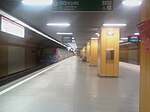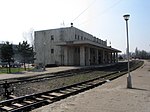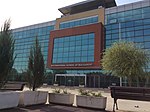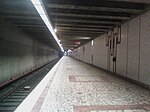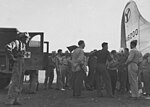Nicolae Teclu metro station
2008 establishments in RomaniaBucharest Metro stationsEuropean rapid transit stubsRailway stations opened in 2008Romania transport stubs ... and 1 more
Romanian railway station stubs

Nicolae Teclu, known for a short time as Policolor is a metro station in southeastern Bucharest on Line M3. It is on the Nicolae Grigorescu – Anghel Saligny M3 branch and was opened on 20 November 2008 as part of the extension from Nicolae Grigorescu to Linia de Centură (now Anghel Saligny). Initially, a shuttle started operating between Nicolae Grigorescu and Linia de centura. The regular operation started on 4 July 2009. It is named after Nicolae Teclu, a Romanian chemist.
Excerpt from the Wikipedia article Nicolae Teclu metro station (License: CC BY-SA 3.0, Authors, Images).Nicolae Teclu metro station
Bulevardul Theodor Pallady, Bucharest Titanul Nou (Sector 3)
Geographical coordinates (GPS) Address Nearby Places Show on map
Geographical coordinates (GPS)
| Latitude | Longitude |
|---|---|
| N 44.4075 ° | E 26.194722222222 ° |
Address
Bulevardul Theodor Pallady 51
032266 Bucharest, Titanul Nou (Sector 3)
Romania
Open on Google Maps

